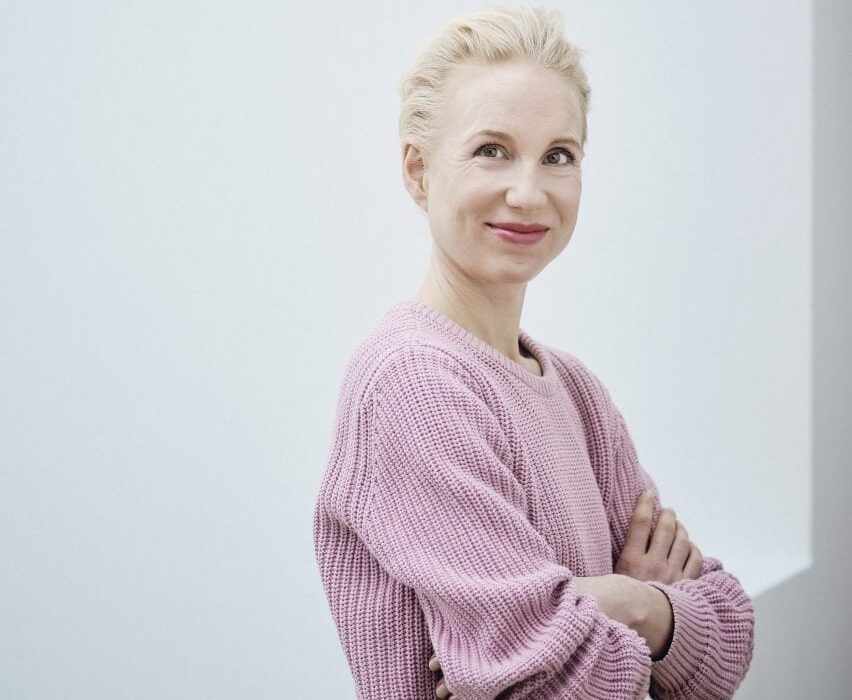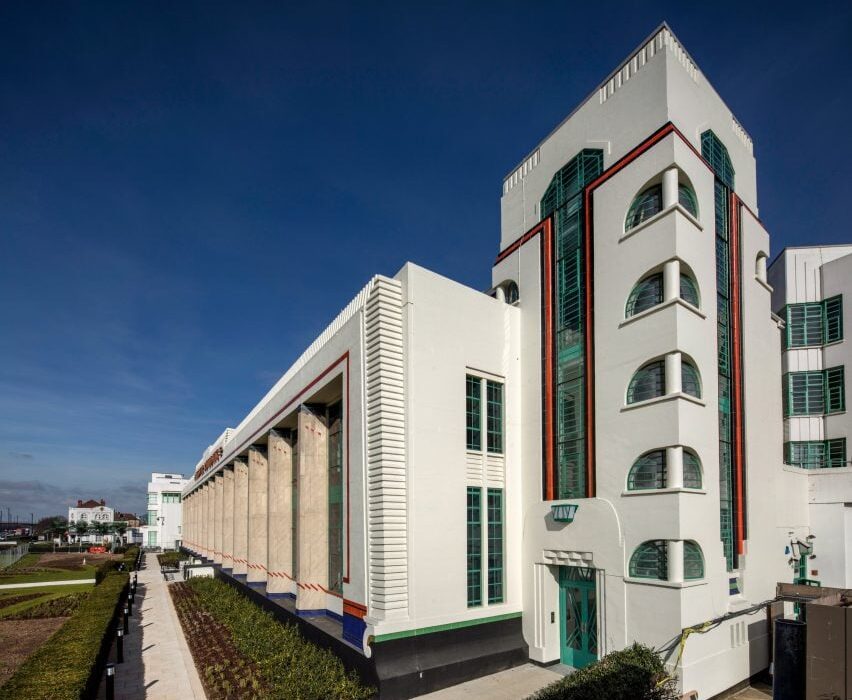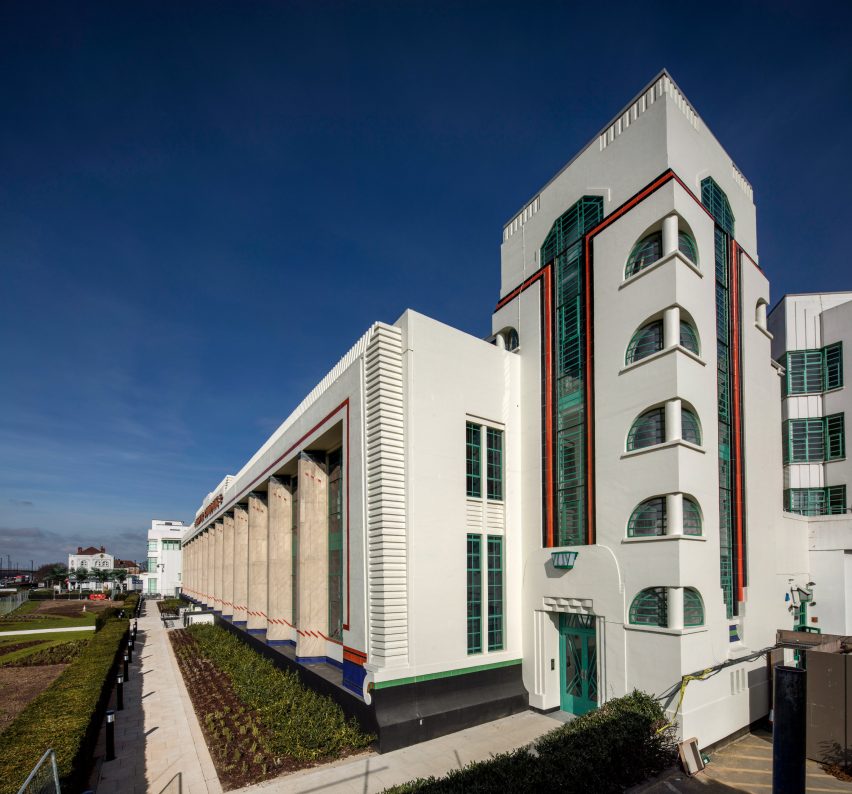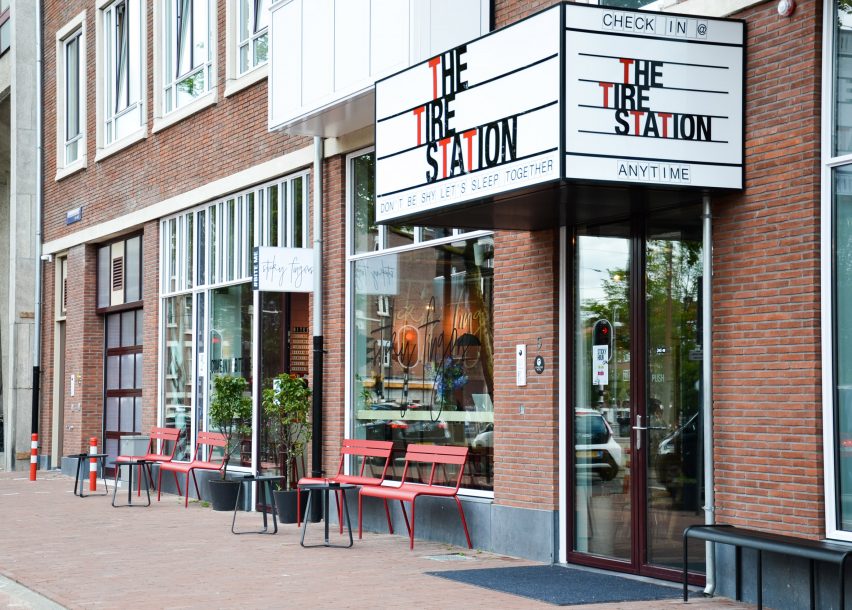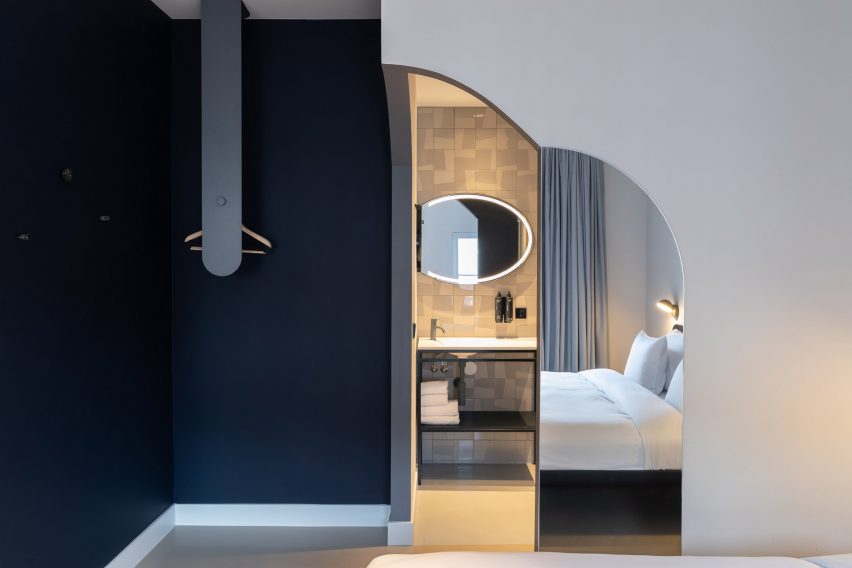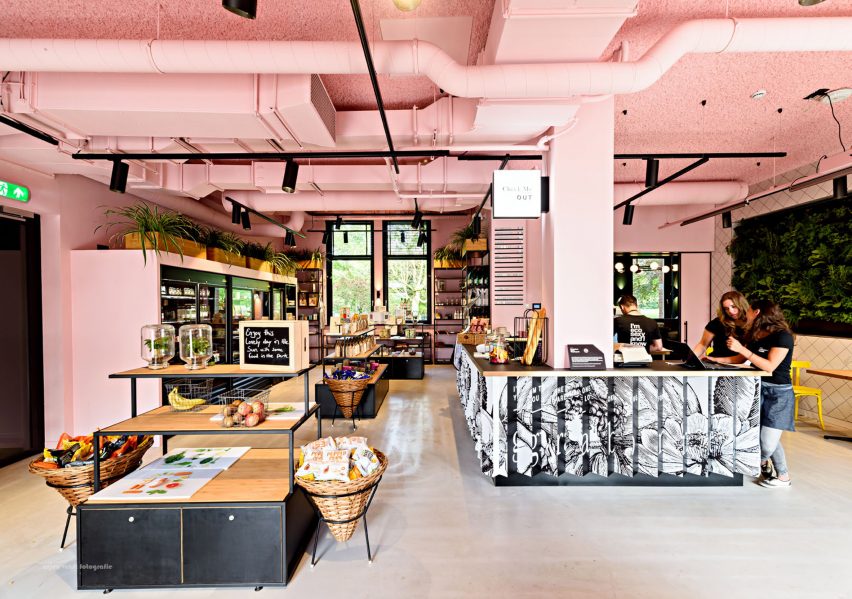Vitra “willing to take risks” on changing products says CEO Nora Fehlbaum
Swiss furniture brand Vitra will prioritise reducing the environmental impact of its existing lines through material innovation, CEO Nora Fehlbaum tells Dezeen in this interview.
One of the industry’s best known and most influential manufacturers, Vitra‘s collections include iconic pieces such as Eames plastic shell chairs and Panton chairs.
Like its peers, the brand is under increasing pressure to reduce the ecological footprint of its operations in the face of worsening climate change.
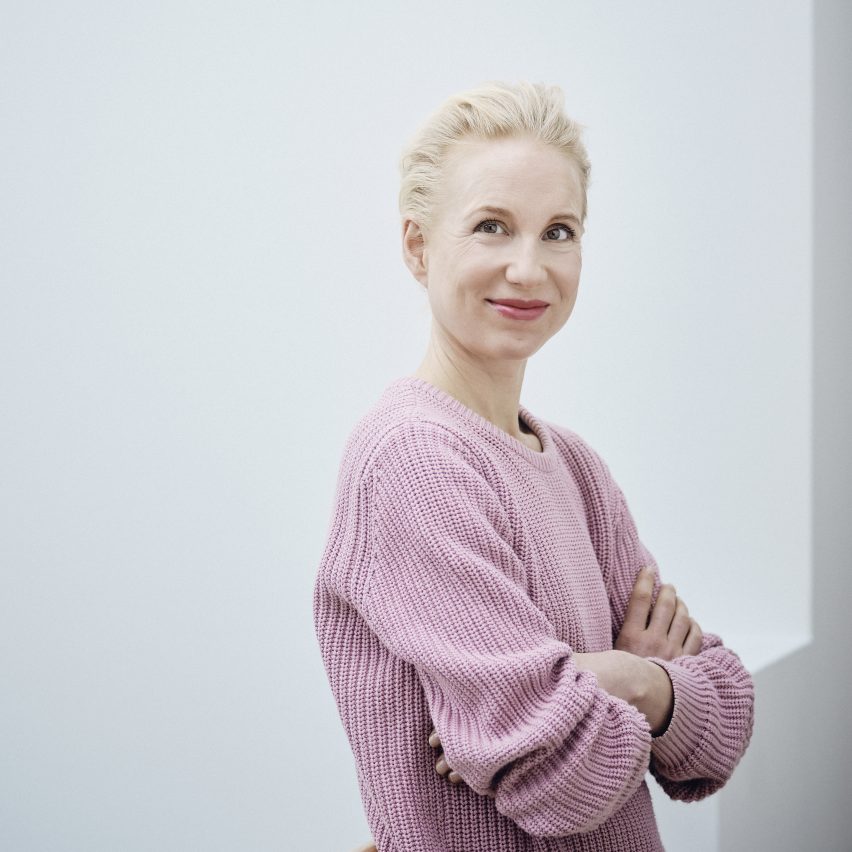

Speaking to Dezeen at the Vitra Campus in Weil Am Rhein, Germany, Fehlbaum suggested that the company’s heritage as a high-end, design-focused furniture brand is inherently aligned with sustainability.
“Vitra’s greatest contribution to sustainability is its products with an above-average service life, which omit everything superfluous,” she told Dezeen.
“Our roots in modern design would allow nothing else.”
However, she claimed Vitra is “doing everything we can with all the means we have” to become more sustainable.
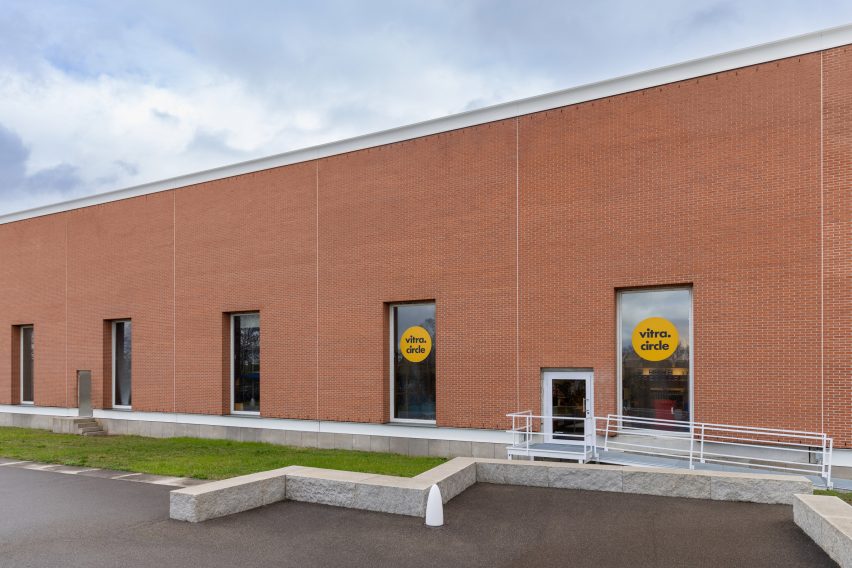

“Everybody at Vitra has understood our environmental mission,” she said. “We don’t have a sustainability officer – everybody has taken it as their own.”
Vitra’s stated goal is to be “a net-positive company based on all the indicators of its ecological footprint by 2030”.
It has a long way to go, with the company’s most recent sustainability report published in 2022 stating that its total emissions for the year were equivalent to nearly 141,000 tonnes of CO2.
Eames shell chairs now made from recycled plastic
The brand’s sustainability strategy is chiefly focused on its popular existing products, Fehlbaum said.
“We have the biggest impact if we change the products that we sell the most of already, rather than inventing one single sustainable product,” she argued.
“At Vitra, a product is never final, but continues to evolve.”
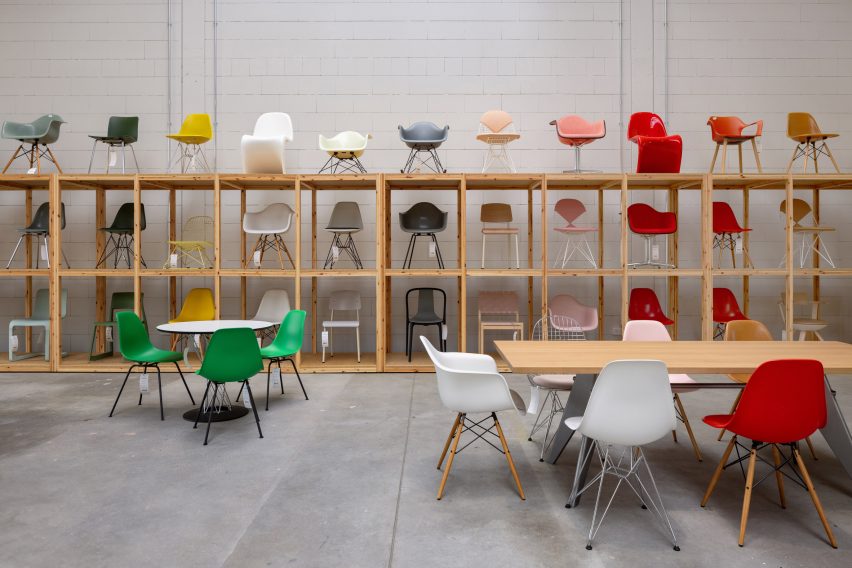

As of January this year, the shells of the Eames plastic chairs manufactured by Vitra are now made exclusively from recycled post-consumer plastic.
“[The Eames shell chair] is probably the most iconic, most copied chair out there – and it won’t be available in virgin material,” said Fehlbaum.
The switch means the shells have a speckled finish that differs from the originals, but Fehlbaum is satisfied with this “recycled aesthetic”.
“It’s a different aesthetic, and of course we hope the consumer gets used to – and maybe even comes to love – this new aesthetic,” she said.
“That’s a risk that we’re taking and that we’re willing to take.”


It follows earlier switches of products and parts from virgin to recycled plastic, starting with Barber Osgerby’s Tip Ton chair in 2020.
A number of accessories like Arik Levy’s Toolbox and Konstantin Grcic’s Locker Box have since followed. The entire HAL chair family, designed by Jasper Morrison, now also have their shells manufactured using recycled plastic.
The recycled plastic is taken from household recycling obtained through the German garbage collection programme Gelber Sack (Yellow Bag).
“Utilising this raw material instead of petroleum-based primary plastics generates fewer climate-damaging emissions and less primary energy consumption,” Fehlbaum claimed.
The role of recycling in solving the world’s plastic pollution crisis is contested among designers.
Some, including designer Richard Hutten and Belgian curator Jan Boelen, argue that big brands are using recycling to create an illusion of change while continuing to use virgin plastics.
Others, among them the CEO of the Ellen MacArthur Foundation Andrew Morlet, argue that durable, recyclable plastics can form part of a circular economy.
Many recycled plastic products involve the use of some virgin plastic or additive substances that then complicate or inhibit their own recyclability.
Vitra said its RE product, used for the Eames shells, does not contain any virgin plastic and can be fully recycled at the end of the product’s life thanks to the use of technical fillers, like glass fibres, rather than any additives that prevent onwards recycling.
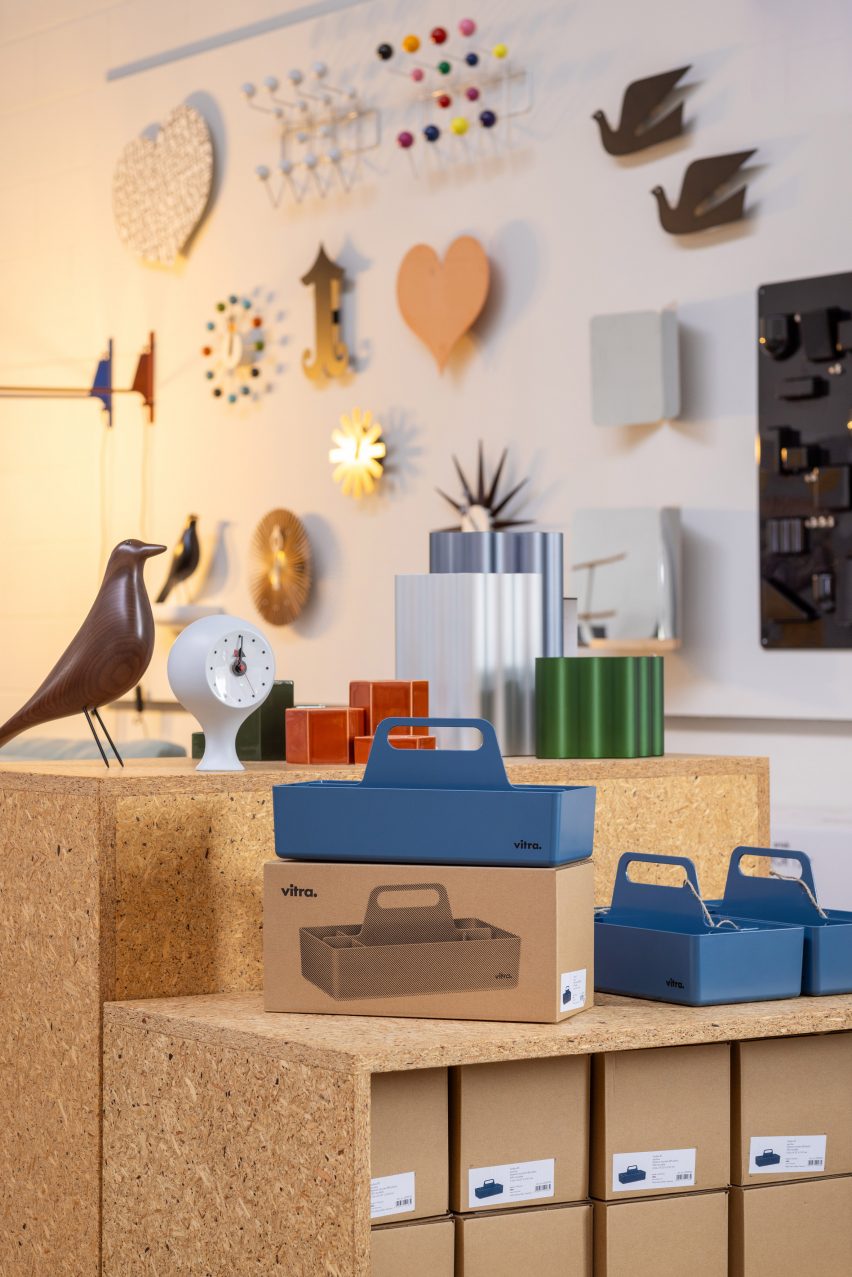

Another sustainability initiative is Vitra’s Circle Stores, which sell used furniture and accessories by Vitra and Artek, such as sample products and exhibition pieces, with prices depending on the condition of the products.
All products are tested for functionality and repaired if necessary so that a renewed product warranty can be granted.
The first Circle Store opened in Amsterdam in 2017 in response to questions from customers about second-hand Vitra products, with a second in Brussels.
A third recently “moved” from Frankfurt and opened in an adapted space at the Álvaro Siza-designed Vitra Campus factory building, with a service and repair area where customers can bring their products to receive a new lease of life.
“With the Circle Store, we can offer our environmentally conscious clients an even more environmentally conscious choice: namely that of a second-hand product,” said Fehlbaum.
Absence in Milan “really wasn’t such a huge deal”
The brand has also taken steps to rewild parts of the Vitra Campus. The Piet Oudolf garden was completed in 2020 and Vitra is working with Belgian landscape architect Bas Smets on a masterplan plan for fewer roads and more native trees on the site.
Fehlbaum acknowledges that some may be sceptical about the sustainability work it is doing within the context of widespread greenwashing.
“It’s impossible to get through this jungle of messaging,” she said.
“How do we talk about it to make sure that it is clear how thoroughly and authentically we’re really tackling this?”
Some other furniture brands have also reduced their presence at design fairs amid concerns about the significant emissions associated with shipping products around the world for temporary showstands.
Vitra has historically had a significant presence in Milan during the Italian city’s annual design week in April, but was noticeably absent in 2023.
However, Fehlbaum said that although she was asked about this a lot “it really wasn’t such a huge deal”.
“For us, it makes a lot of sense to use what we already have,” she said.
“We have the Vitra Campus and it’s not so far from Milan. We prefer to use and invest in something that can be around for five or 10 years rather than spending a lot of energy and resources on something that after five days we’re going to have to break down.”
It is yet to be seen if the brand will return to Milan design week this year.
“The way we think about it [showing at design fairs like Milan] is never black or white,” Fehlbaum explained.
“There might be a moment where we say Milan is exactly the right place at the right moment to talk about something, and then maybe we’ll be there.”
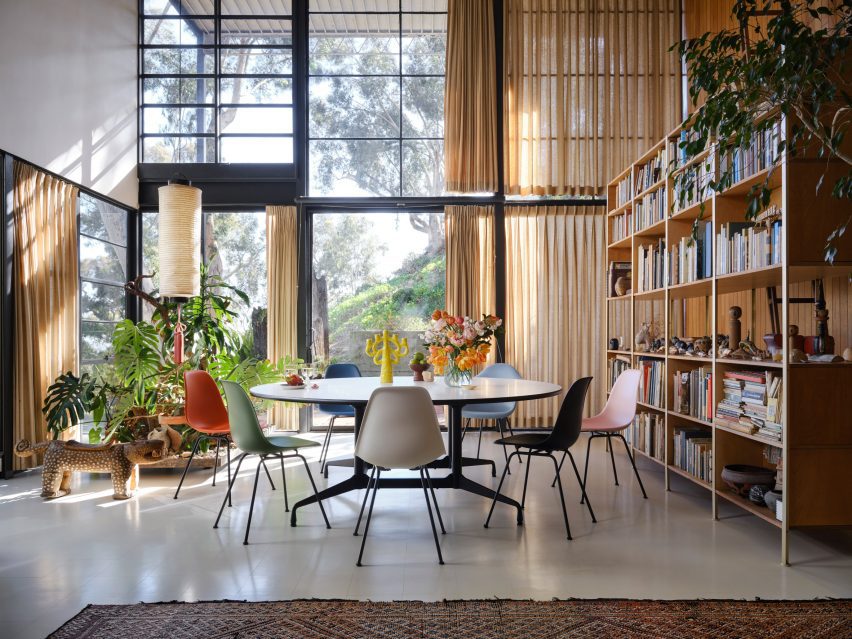

Vitra was founded in 1950 by Nora Fehlbaum’s grandparents Willi and Erika Fehlbaum and has since grown to become one of the industry’s leading names.
Nora Fehlbaum succeeded her uncle, Rolf Fehlbaum, as CEO in 2016 and identifies improving the brand’s sustainability as her key mission.
“There is still a long way to go before reaching our environmental goals,” she acknowledged. “Things need to be tested, mistakes must be made, and in the process the company might sometimes overlook an important aspect or underestimate the impact of an activity.”
This is now a central part of the brand’s function as an industry leader, Fehlbaum suggests.
“The designer landscape has changed. In the past, it was a lot about iconic design and breaking the mould, building your own brand and your studio – new things – and now, the students that are graduating come with their own environmental mission,” she said.
“I see our role, together with these people and with the right suppliers and innovative companies, to find solutions that are, for lack of a better term, sustainable in the longer term.”
Other interviews recently published on Dezeen include the Kvadrat CEO saying sustainability is “not making our lives easier” and Iittala creative director Janni Vepsäläinen sharing her goal to help the brand “remain culturally relevant for another 100 years”.
The photography is courtesy of Vitra unless otherwise stated.
Dezeen In Depth
If you enjoy reading Dezeen’s interviews, opinions and features, subscribe to Dezeen In Depth. Sent on the last Friday of each month, this newsletter provides a single place to read about the design and architecture stories behind the headlines.

